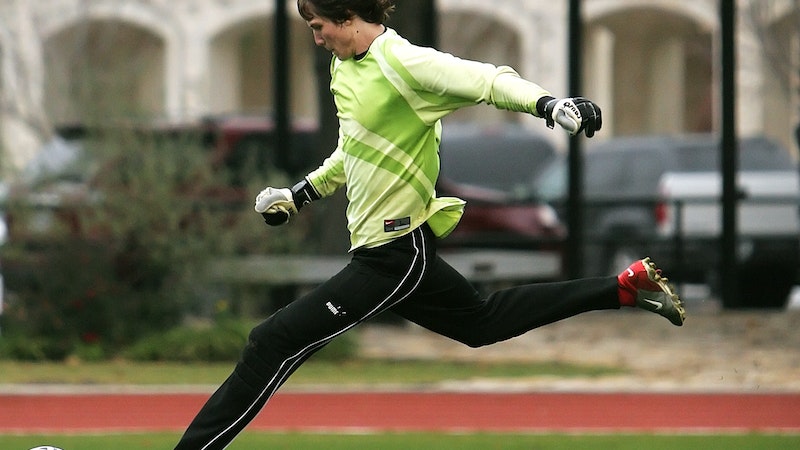In soccer, where every pass, tackle, and goal can sway the tides of a game, there’s a distinctive figure on the field, the goalkeeper.
Clad in an attire set apart from the outfield players, goalkeepers don jerseys of bold colors, eye-catching patterns, and padded sleeves.
But why do soccer goalies wear different uniforms? The answer goes beyond mere aesthetics and delves into the practical, psychological, and regulatory facets of the game.
Goalkeeper uniforms serve as a symbol of their unique role, offering advantages that extend into the realms of visibility, communication, and player psychology.
This blog post explores the historical roots, functionality, and psychological aspects of goalkeeper uniforms, shedding light on why these custodians of the net are the outliers when it comes to soccer attire. So, stay focused.
Why Do Soccer Goalies Wear Different Uniforms
Many people want to know exactly why do goalkeepers wear different jerseys. Soccer goalies wear different uniforms primarily to distinguish themselves from outfield players and to optimize their performance.
The distinct jersey color and design help both players and officials identify the goalkeeper easily on the field. This differentiation is crucial in fast-paced gameplay, preventing confusion during high-pressure situations.
Goalkeeper uniforms also have unique features to enhance their role. They often include padded sleeves or shorts to provide protection when diving or making saves.
The gloves they wear have specialized grip technology to improve ball control. Goalkeeper jerseys are typically long-sleeved to provide more coverage and protection when diving or coming into contact with the ground.
The distinct uniforms worn by soccer goalies serve practical purposes related to identification, protection, and performance optimization within the specific demands of their position on the field.
Historical Context Regarding Why Do Goalies Have Different Jerseys
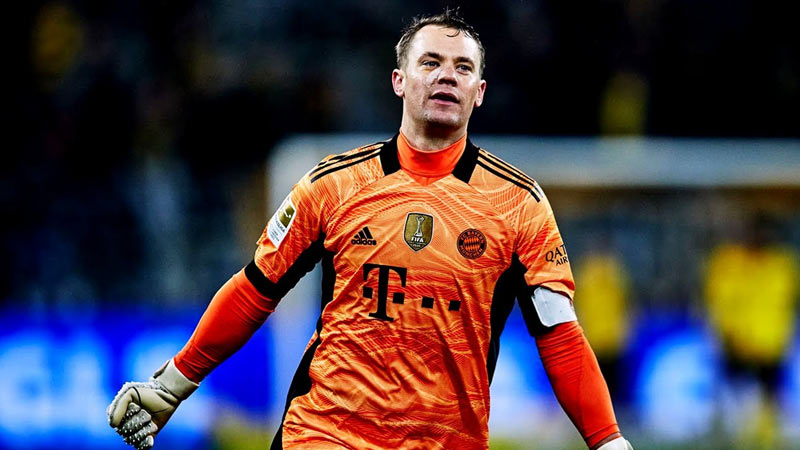
The historical context behind why soccer goalkeepers wear different jerseys is rooted in the evolution of the sport and the need for functional and practical considerations:
Early Soccer Uniforms
In the early days of soccer, the sport did not have standardized uniforms. Players would often wear their regular clothing, which could include various colors and styles.
As the sport became more organized, the need for distinct identification of players, including goalkeepers, became apparent.
Differentiating Goalkeepers
With the advent of organized soccer leagues in the late 19th century, it became crucial to distinguish goalkeepers from outfield players. Goalkeepers needed to be easily recognizable by both teammates and opponents.
The use of different jersey colors or designs for goalkeepers emerged as a practical solution to this issue.
Practical Considerations
Goalkeepers have a unique role in soccer, involving diving, sliding, and coming into physical contact with the ball.
As a result, their jerseys started incorporating padding and specialized features to provide protection and comfort. This further differentiated their attire from outfield players.
Goalkeeper Evolution
Over time, goalkeeper jerseys continued to evolve to meet the specific needs of their position. Long-sleeved jerseys became popular for added coverage and protection.
Goalkeeper gloves with grip-enhancing technology were developed to improve ball-handling skills. These innovations have become integral to the distinct uniform of goalkeepers.
Rules and Regulations
The differentiation of goalkeeper uniforms is now a standard part of the rules and regulations governing soccer.
Referees are required to enforce jersey color distinctions for goalkeepers, ensuring clear identification on the field.
Functionality of Goalkeeper Uniforms
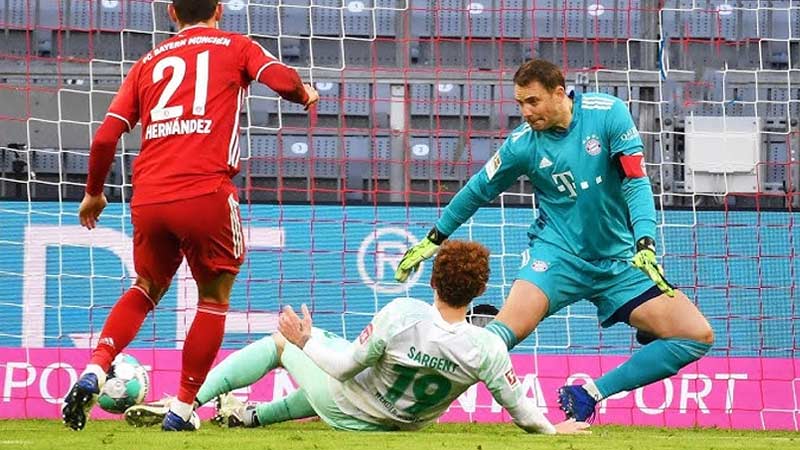
Goalkeeper uniforms are designed with specific functionality in mind to suit the unique demands of the position.
Here are the key aspects of their functionality:
Distinct Identification
The primary purpose of goalkeeper uniforms is to provide easy identification on the field. Goalkeepers typically wear jerseys with colors or designs that contrast with those of the outfield players and the referee.
This distinction helps both teammates and opponents quickly recognize the goalkeeper, reducing the risk of confusion during fast-paced gameplay.
Protection
Goalkeepers often dive, slide, and come into contact with the ground while making saves. To minimize the risk of injury, goalkeeper uniforms incorporate padding.
These padded sleeves and shorts offer protection for the elbows, shoulders, hips, and other vulnerable areas. This added protection is crucial for the goalkeeper’s safety and ability to play at their best.
Grip and Ball Control
Goalkeepers rely heavily on their hands and their ability to control the ball. Goalkeeper gloves are an integral part of their uniform and are designed with specialized grip technology.
These gloves offer a secure grip on the ball, even in wet conditions, enhancing the goalkeeper’s ability to catch, hold, and distribute the ball with precision.
Comfort and Performance
Goalkeeper jerseys are typically long-sleeved, providing extra coverage and protection. This design helps goalkeepers stay comfortable and focused on the game, even in adverse weather conditions.
The fit of goalkeeper uniforms is also tailored to their needs, allowing for freedom of movement while maintaining a secure and comfortable fit.
Psychological Advantage
The distinctive appearance of goalkeeper uniforms, often with bold and unique designs, can also provide a psychological advantage.
Goalkeepers can use their attire to establish their presence and confidence on the field, potentially influencing penalty-takers and opponents.
This psychological element adds to the overall functionality of their uniforms.
Visibility and Communication of Soccer Goalkeepers
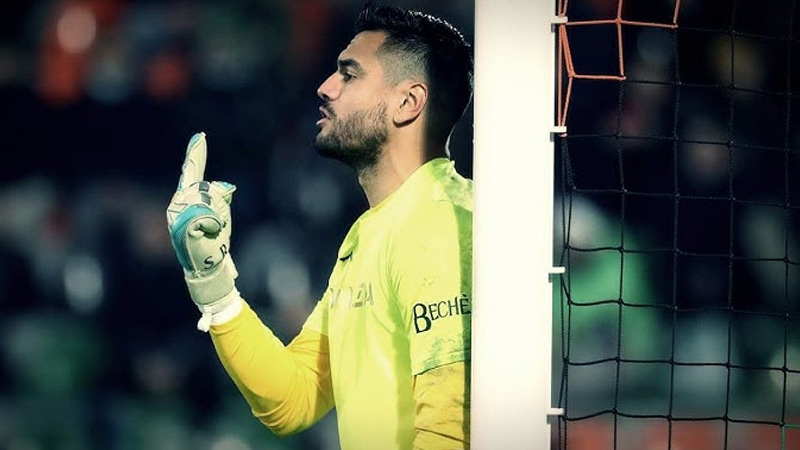
Visibility and effective communication are essential for soccer goalkeepers to perform their roles efficiently. Here are several key points regarding these aspects:
Distinctive Attire for Visibility
Goalkeepers wear uniforms with distinct colors that contrast with the outfield players. This clear visual distinction is essential for players, referees, and spectators to identify the goalkeeper easily on the field.
It helps prevent confusion during gameplay, especially when players are in motion, and quick decisions need to be made.
Enhanced Communication
Goalkeepers play a pivotal role in organizing the defense. They have a clear view of the entire field and can communicate instructions and warnings to their defenders.
They use vocal commands, hand signals, and body language to convey information about positioning, marking, and reacting to the opponent’s movements.
Effective communication is critical in maintaining a well-organized defense and minimizing defensive errors.
Coordination with Defenders
Communication between the goalkeeper and the defenders is crucial for coordinated play.
The goalkeeper often guides the defenders in adjusting their positions, anticipating opposition plays, and executing set pieces, such as defending free-kicks and corners.
Clear and concise communication helps the team act as a cohesive unit, improving their ability to defend effectively.
Set Pieces and Defensive Organization
During set pieces like corner kicks and free-kicks, goalkeepers play a central role in organizing the defense.
They communicate with defenders to set up zonal or man-marking systems, mark specific players, and react to the opponent’s movements.
This coordination is vital to prevent the opposing team from scoring in such situations.
Psychological Influence
Goalkeepers’ visibility and communication can have a psychological impact on both their own team and the opposing team.
A confident and assertive goalkeeper who communicates effectively can boost the morale and focus of their teammates while potentially unsettling the concentration of the opposing team’s attackers.
Visibility and communication are integral components of a goalkeeper’s role in soccer.
Psychological Factors on Why Are Soccer Goalie Uniforms Different
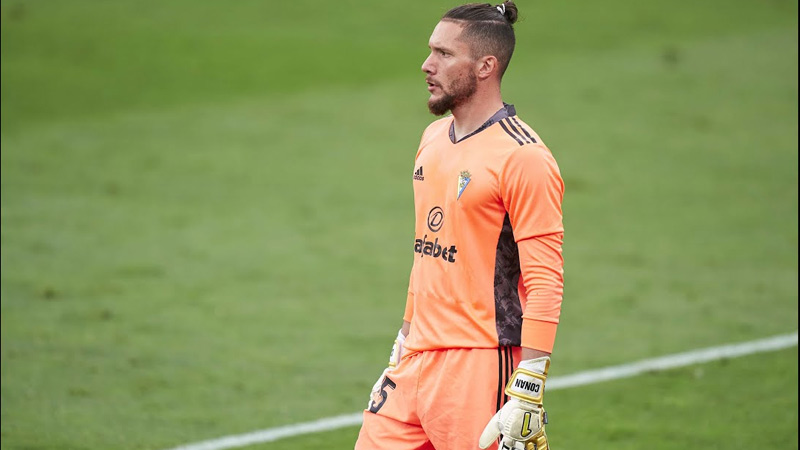
Psychological factors play a significant role in the design and distinctiveness of soccer goalkeeper uniforms.
Here are several points explaining these psychological aspects:
Psychological Advantage
Goalkeepers’ uniforms are often designed to provide a psychological advantage.
The distinct and sometimes bold colors and patterns of goalkeeper jerseys can serve to intimidate or disrupt the concentration of penalty takers and opposing players.
The visibility of the goalkeeper can create a psychological edge, as shooters may feel additional pressure when facing a well-identified and imposing figure in the goal.
Confidence and Identity
Wearing a unique and distinct uniform can boost a goalkeeper’s confidence and sense of identity on the field.
When goalkeepers don their specific attire, it can help reinforce their role and responsibilities as the last line of defense.
This boost in confidence can lead to better decision-making and performance, as the goalkeeper feels more in control and authoritative in their position.
Team Unity
The psychological impact of distinct goalkeeper uniforms also extends to team unity. When goalkeepers have their own distinctive attire, it can foster a sense of belonging and specialization within the team.
This can have a positive influence on team dynamics, creating a stronger bond among players and a better understanding of their respective roles.
Fan Connection
The unique appearance of goalkeepers can also have a psychological impact on fans. Goalkeepers often become fan favorites due to their distinctive attire and their pivotal role in critical moments of the game.
This psychological connection can result in increased support and enthusiasm from fans, which can further motivate the goalkeeper and the team as a whole.
Motivation and Focus
Goalkeepers often use their uniforms as a source of motivation and focus.
The act of putting on the specific attire can serve as a mental trigger, helping goalkeepers enter a state of heightened concentration and readiness.
The uniform becomes a symbolic representation of their role and responsibilities, reinforcing their commitment to the team’s success.
The psychological factors related to goalkeeper uniforms go beyond mere aesthetics.
Regulations and Rules on Goalies’ Uniforms
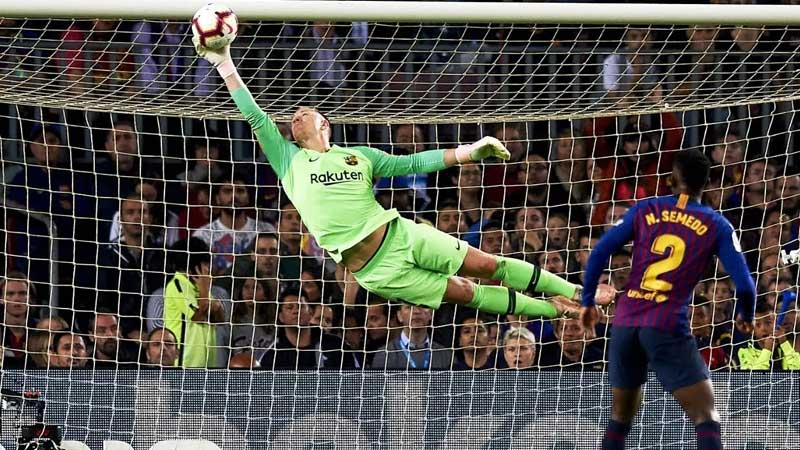
Regulations and rules governing goalkeepers’ uniforms in soccer are essential to maintain fairness, safety, and uniformity across the sport.
Here are several key points related to these regulations:
Color and Design
One of the most fundamental rules concerning goalkeeper uniforms is the requirement for distinct colors or designs.
Goalkeepers must wear jerseys that are easily distinguishable from the uniforms of outfield players and the referee.
This rule helps prevent confusion on the field, ensuring that all players and officials can quickly identify the goalkeeper.
Uniform Numbers
Goalkeepers are usually required to wear a different number from their teammates. This distinct numbering allows for clear identification, even from a distance.
It is essential for referees, players, and spectators to identify the goalkeeper when decisions are made during a match.
Logos and Advertisements
While goalkeepers’ uniforms must be distinct, they are also subject to regulations regarding logos and advertisements.
The size and placement of sponsor logos, team emblems, and other insignia must adhere to the rules set forth by the governing bodies of the sport, such as FIFA or national soccer associations.
Safety Equipment
Goalkeeper uniforms often incorporate safety features, such as padded sleeves and shorts. These elements are subject to regulations that ensure they meet safety standards and do not provide an unfair advantage.
The padding must be approved and cannot be excessively bulky or rigid to prevent injury to the player wearing it or its opponents.
Gloves
Goalkeeper gloves are considered an essential part of the uniform and are subject to regulations. These regulations cover factors such as grip-enhancing technology and size to ensure fair play and player safety.
Goalkeeper gloves must not have any sharp or dangerous components that could harm other players.
Uniform Changes
In some cases, goalkeepers may be required to change their uniforms if their attire clashes with the opposing team’s colors or if there is any doubt about the visibility of the goalkeeper.
This rule helps maintain uniformity on the field and prevents confusion.
Relevance to Game Officials
Game officials, such as referees and assistant referees, also rely on these uniform regulations to make accurate judgments during a match.
If a goalkeeper’s uniform does not conform to the rules, the match may be delayed until the issue is resolved to ensure fair play.
Regulations and rules related to goalkeeper uniforms in soccer are in place to ensure fair play, safety, and clarity on the field.
FAQs
Why do goalkeepers wear different colors?
Goalkeepers wear different colors to distinguish themselves from outfield players and referees.
This color contrast helps players and officials quickly identify the goalkeeper on the field, reducing confusion during the game.
Why does the goalkeeper wear a different uniform?
Goalkeepers wear distinct uniforms because they have a unique role and need specialized attire.
Different colors help the team, officials, and opponents recognize the goalkeeper, and their clothing is designed for enhanced grip and protection.
What is the purpose of the goalkeeper’s different uniform?
The purpose of a goalkeeper’s different uniform is twofold. First, it provides a visual distinction, making it easier for players, referees, and fans to identify the goalkeeper.
Second, the uniform is designed with specialized features like padded areas for protection and grip-enhancing technology for better ball handling.
Can goalkeepers wear any color for their uniforms?
While goalkeepers have some flexibility in choosing their uniform colors, they typically follow guidelines set by their team or league.
These guidelines ensure that the goalkeeper’s uniform contrasts with both teams and the officials’ attire for clarity and fairness.
Do the different colors of goalkeeper uniforms serve any tactical purpose?
Yes, the distinct colors of goalkeeper uniforms can have a tactical advantage. They may confuse opponents during penalty kicks, making it harder to predict where the goalkeeper will dive.
Additionally, brightly colored uniforms can help goalkeepers communicate with their teammates effectively on the field.
Wrapping Up
In the world of soccer, the goalkeeper is a guardian of the net, and their distinctive attire serves as more than just a fashion statement.
As we’ve explored, the history, functionality, and psychological factors behind why soccer goalies wear different uniforms reveal the intricate dynamics at play in the sport.
These unique jerseys not only aid in swift identification on the field but also provide a psychological edge and boost the confidence of the guardians of the goal.
From the padded sleeves that offer protection during daring dives to the bold colors that create a psychological presence, goalkeeper uniforms are a testament to the intricacies of the beautiful game.
They are a symbol of the goalkeeper’s unique role and responsibilities, contributing to the harmony and performance of the entire team.
So, the next time you watch a soccer match, pay attention to the goalkeeper’s attire; it’s not just a uniform, but a representation of the dedication, strategy, and psychology that make soccer an unforgettable sport. Best wishes.

